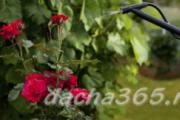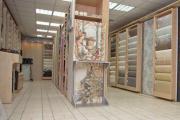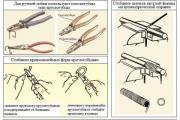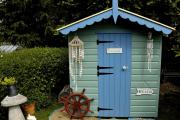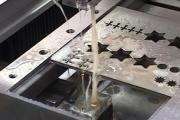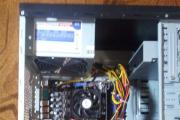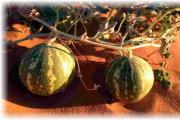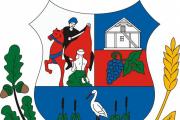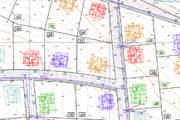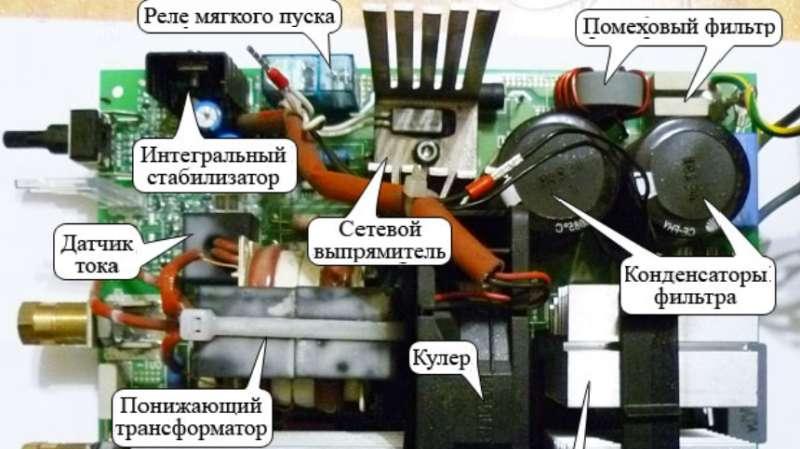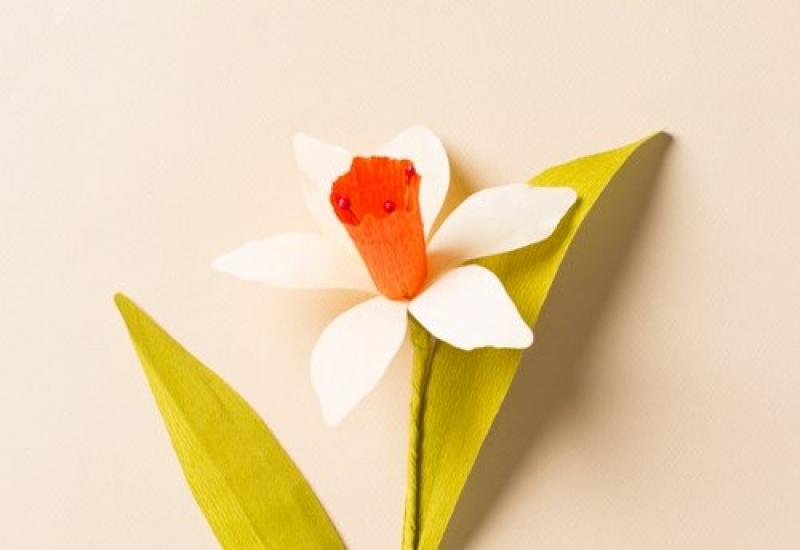Thermal transfer technology on wood. Transferring an image to a tree - technology features
Don't let buzzwords like sublimation printing technology or graverton scare you, because they are one and the same, therefore, there is less incomprehensible. The technology is based on the principle of sublimation, when a substance under the influence high temperature"Jumps" from the gaseous state immediately to the solid, bypassing the wet stage.
Graverton technology allows you to transfer a pattern to wood, metal, glass, fabric, and the process itself takes place in a certain order:
- An image is printed on sublimation paper;
- The front side is applied to the object being processed;
- It is placed in a heat press for a certain time.
A huge number of things can be subjected to artistic processing - from shoes, dishes, fabrics to corporate symbols, puzzles and all sorts of other unexpected things.
The main drawback of the graverton technology is the need for special equipment and its high price:
- sublimation printer(starting from 500 thousand rubles with kopecks);
- thermal transfer press(from 9 to 30 thousand rubles).

And since you want to transfer a drawing to a tree at home from time to time, it makes sense to purchase expensive equipment only if you put things on a grand scale.
We create for ourselves
With a minimum of tools, you can also figure out how to translate an image onto a tree no worse than using high-tech equipment. Perhaps the most important thing is to decide on the topic, because erasing "nonsense" will be, oh, how difficult.
There are several rules that will teach you how to transfer a drawing to a tree so that it looks right:
- The work surface should be bright and clean;
- The direction of the wood fibers should not spoil the drawing, for example, oblique lines can add photos of extra wrinkles;
- A theme with words/numbers is printed in a mirror image (a photo editor will help rotate the image);

- It is desirable to have a photograph for scanning digital, with high image quality;
- In a wooden picture, the photo is always located with the front part to the tree, so we will not constantly remind you of this.
The first stage of work is to think about two questions - for what purpose and what will you "sketch". So, what happens can be presented, used for decoration, hung on the wall in the form of a funny maxim, used for practical purposes.
With an elegant vignette, composition or photograph, you can decorate not only a key chain, a small sheet of plywood / board, signs, but also doors, bed headboards, window sills, chairs - everything that makes sense to decorate. We present to your attention some simple but effective ways to transfer an image to a tree.

The first method is free
Free, because you can find it on a computer and make printouts on a laser printer at work or with friends. There you can also prepare the board by grinding with fine-grained paper (P 220) or a wood grinder (there are always support staff in the staff - locksmiths and carpenters).
Let's start working:
- find a pattern and enlarge it to the required size, print;
- put the sheet on the board;
- iron with a hot iron.
You can moisten the sheet with acetone before transferring the picture to the tree so that the pigment comes off better, however, to the detriment of the homely atmosphere. It would be useful to cover the nose and mouth with a gauze bandage or scarf. Typically, this technology is suitable for the subsequent burning of the pattern with a special tool.

Note! Put the carbon paper on the board with the coloring side down, on top of the necessary drawing and circle it with a pencil. The main thing is not to move the paper and not carry it with your hand, otherwise the board will get dirty. It makes sense if the drawing is small.
Method two - glue
In addition to high-precision technology, source code and wooden canvas, you will need:
- ordinary PVA glue;
- solvent;
- fine-grained emery;
- varnish, for example, Dulux;
- roller;
- sponge/long knife;
- a lot of patience.
Note! Experienced craftsmen advise slightly lightening the image before transferring the photo to the tree, because the finished color will be more saturated.
- degrease and sand the cut piece of wood / plywood;
- cover the surface of the photo with a continuous layer of glue;
- put the dirty side on the tree;

- roll out the sheet with a roller in the manner of smoothing the wallpaper, or by swiping with the flat side of the knife;
- leave to dry for a day;
- moisten the sheet with a damp sponge;
- start slowly and carefully erasing the paper with your own hands, or rather, with your fingers;
- let the work dry;
- varnish.
Method three - gel
From it you will learn how to transfer a drawing to a tree using an acrylic gel medium. This modeling paste, used to create a relief surface, costs more than 500 rubles, but it’s not worth saving, just like using an expired one. According to the masters good product manufactured by Raphael.
Of the tools and supplies you will need:
- photograph and tree of the same size;
- gel medium and brush to it;
- roller / knife / ruler;
- paraffin / matte glue used for decoupage;
- another brush for paraffin.

The work instruction is in many ways similar to the previous one:
- Apply the gel to the board with a brush. The layer should not be thick, but without bald spots;
- a photograph is placed on the treated area and smoothed out, expelling air bubbles;
- leave overnight in a secluded place;
- roll up paper, let dry;
- cover with paraffin.
We indulge in translations
I wonder how to transfer a photo to a tree without gel and glue? An alternative would be a clean decoupage film on which the photo will be printed.
After getting wet, the substrate is pulled out from under the top film, leaving a juicy pattern in place.
To work, you will need a skin, white acrylic paint, a plate of water, cotton pads, paper napkins, brushes, a marker, patinating varnish.

- Sand the surface;
- Lightly dilute the paint with water and apply the first layer, brushing along;
- The second layer, respectively, transverse strokes. Let dry;
- Before transferring the picture to the tree, you need to lower it for half a minute in water at room temperature;
- Take out, attach to the surface and pull out the base;
- Remove excess moisture from the film with blotting movements;
- Let it dry and mask the flaws with a marker.
- Open with varnish.
Note! You can buy special napkins for decoupage. With them, the question of how to transfer a drawing to a tree will not cause any particular difficulties.
In conclusion
The new possibilities of the wood surface used as the basis for a painting or photograph are unusual and evoke a lot of emotions. Familiar images look a little different than on paper - softer, more mysterious. Branded consumables will help to immortalize your work, which may outlive the paper version.
The video in this article shows an example of transferring an image to a tree.
The sublimation printing method refers to digital methods of transferring an image to a material. In modern printing, it is in the forefront in terms of productivity, as it allows you to get prints on almost any surface in a short time and at the same time guarantees excellent quality.
Briefly about sublimation printing
The essence of the method is to transfer ink to the printed material by heating it strongly. During the technological process, the temperature of the ink reaches 180-200 °C, as a result of which they begin to evaporate quickly and penetrate into the structure of the workpiece in a gaseous form. Sublimation printing is an indirect type of printing, since the transfer of the coloring matter occurs through an intermediate carrier. Basically, paper is used as such. Thermal transfer of sublimation ink to the printed surface occurs under the influence of press pressure.
Application area
As a rule, this method of obtaining prints is used for advertising and decorative design of souvenir products. As carriers of the printed image can be:
- Home textiles.
- Items of clothing.
- Dishes.
- Puzzles.
- Posters, banners and stands.
Due to the fact that sublimation printing is of high quality, it has gained particular popularity in the field of advertising. This method of ink transfer allows you to quickly produce large runs of products, while maintaining the saturation and brightness of prints.
As for souvenirs, they are in no less demand. It should only be noted that sublimation printing on flat fabric materials is the most common. This is due to the fact that bulk products require the purchase of additional equipment. For example, sublimation printing on mugs is done in a round-shaped heat press.

Sublimation printing: pros and cons
Not to mention all the positive aspects of digital printing, the sublimation method can be called a well-deserved leader in the field of modern printing. First of all, it allows you to make the technological process as cost-effective as possible. Secondly, it enables the consumer to receive products that have such advantages as:
- Resistant to abrasion and UV rays.
- High quality images.
- Thermal resistance.
Sublimation printing has another positive feature: it allows you to freely adjust the volume of circulation. With its help, you can produce as one unit of production, and several thousand.
There are only two disadvantages of the sublimation method. Firstly, printing should only occur on white materials. This is necessary for color accuracy. The second disadvantage is that the paint is well fixed only on synthetic fibers.

Sublimation equipment: printers and heat presses
A sublimation printer is used to transfer the ink onto an intermediate carrier. It is selected in accordance with the requirements for the final product. The characteristics of a sublimation printer must meet three parameters:
- The type of images to be printed (raster or line).
- Estimated circulation of products.
- Desired size of printed sheets of paper.
The transfer of the image to the intermediate material can be done by absolutely any method: inkjet, offset, pad, etc. However, it should be borne in mind that the paint cannot be heated before it interacts with the final product. Therefore, a thermal inkjet printer for sublimation printing is not used. As a rule, preference is given to piezoelectric models.
The print obtained on paper is transferred to the product using a heat press. There are designs with stationary and calender clamps. The choice of one or another technology should be justified by the characteristics of the circulations being produced. For the production of large-format advertising on banners and posters, calender thermal presses are used. If printing is limited to small-circulation production of souvenirs, then preference is given to stationary models.

Materials for sublimation printing
Sublimation printing technology allows you to transfer paint to almost any surface. Fabric, wood, plastic, glass, ceramics and even metal can be used as the base material. However, the main feature of the process is that sublimation ink adheres only to polymer compounds. Therefore, before applying the image, the material must be covered with a special acrylic-based varnish. If the print is made on fabric, then it must consist of at least 60% synthetic fibers. The highest quality prints are obtained on pure polymer textiles made entirely of polyester or polyester.
Compared to classical methods of ink transfer, sublimation printing is simply the pinnacle of modernity. It does not limit the user either in the amount of circulation, or in materials, or even in the form of manufactured products.
Our catalog contains a film for decorating metal that imitates noble wood species - cherry, oak, chestnut, walnut, mahogany, alder and other trees. The same type of decorative film can be used on substrates of different colors, expanding the range of imitated wood species.
We present a new line of primers for decoration produced by EUROPOLVERI (Italy).
As a base layer for applying thermal transfer decors from a film, powder materials are used that perceive the dyes introduced from the thermal transfer film during heating and, which is also very important, minimize their masking with their own pigment, while maintaining the brightness and clarity of the applied pattern. The film should provide maximum resistance of decorated metal products to atmospheric influences (primarily to ultraviolet radiation) and mechanical stress.
Stylized moiré and smooth surfaces in a matt finish are presented in this new line in white, beige, brown and red shades, which allow, in combination with various decorating films, to obtain any “species” of wood as a result: pine and rosewood, mahogany and cherry, pear and oak .
ARCHITECTURAL DECORATION PAINTS are QUALICOAT P-1174 and QUALIDECO PS-011 certified, guaranteeing the fade resistance of the decorated coatings.
A new collection of thermal transfer films "Sublitex" produced by MIROGLIO (Italy)
The 75 samples of thermal transfer films presented in the catalog are certified by QUALIDECO, which guarantees the resistance to fading of the resulting decorated coatings. Browse the catalog of the new film collection
The price of a film for decorating under a tree is from 0.7 euros per square meter, depending on the quantity. All presented materials are available in a warehouse in Moscow.
List of thermal transfer films in stock in Moscow:
| CODE | NAME | COLOR | EXAMPLE |
| Italian cherry |  |  |
|
| American oak |  |  |
|
| Japanese maple |  |  |
|
| Acacia light |  |  |
|
| Pecan |  |  |
|
| cherry striped |  |  |
|
| Beech oriental |  |  |
|
| Chestnut |  |  |
|
| Alpine oak |  |  |
|
| fiamma cherry |  |  |
|
| Sapele Piraeus |  |  |
|
| oak modern |  |  |
|
| Bubinga dark |  |  |
|
| Bubinga light |  |  |
|
| Teak |  |  |
|
| spanish oak |  |  |
|
| Altai oak |  |  |
|
| rustic oak |  |  |
|
| Okume |  |  |
|
| American walnut |  |  |
|
| Olive Tree |  |  |
|
| mountain elm |  |  |
|
| Atlantic cherry |  |  |
|
| Rock Oak |  |  |
|
| Pine |  |  |
|
| Cork oak |  |  |
|
| Amur oak |  |  |
|
| Walnut |  |  |
|
| Apennine walnut |  |  |
|
| Sapele Iberico |  |  |
|
| Canadian maple |  |  |
|
| Cherries |  |  |

Decorating process
Decorating film for powder polymer coatings is a polyester base with a pattern applied to it with special dyes, which is transferred to the powder coating during the decoration process (sublimated)
The prepared product is placed in an oven and heated for ten minutes at a temperature of 170 to 190 degrees, as a result of which the metal surface acquires the necessary pattern. Great importance has the quality of the source material, and in order for the decoration of metal with a film to bring the expected result, you should use the services of trusted suppliers for both the primer and the decorating strip. The Euro-Decor company represents materials of famous brands on the Russian market, so the quality of the final product will be guaranteed to be impeccable.
Decoration film - purpose and benefits
Film decoration is carried out in sublimation technology, in which the surface of an aluminum or steel profile with a pre-coated polymer coating takes on the pattern depicted on the film. Wood decoration is especially popular in the manufacture of street interior products. The advantages of such a solution are obvious - the profile decorated in this way is not only not afraid of corrosion, but also receives a coating that can withstand significant mechanical stress, is resistant to temperature changes and is easy to wash or clean.
The film for decoration has significant advantages over other options for decorating metal surfaces:
- The decorative layer does not crack;
- The coating does not fade in the sun;
- Ease of care and cleaning;
- Withstands all operating conditions.
Features of applying a decorating film
The application of the film is carried out in the factory, as a vacuum heat press with controlled heating and precise temperature control are required. Decorating to look like wood or other material can only be carried out after surface preparation and powder coating - only after that a decorating film is applied to the base coat. Heat treatment is the final step in a labor-intensive process. They can help you fulfill your order for decorating: in Moscow - the Nayada company, in St. Petersburg - the BTC company, in Samara - the Luka company.
Why do we have
By purchasing a wood effect film in our company, you save your time and money, a staff of experienced specialists will help you choose the most optimal coating option based on the requirements of the client. Here you can buy a film for decoration, various types of powder paint at the most affordable prices in the region. Most of the enterprises offering painting services in the central region of Russia purchase our products, thanks to which customers can buy a decorated profile not only in Moscow, but also in other large cities - St. Petersburg, Kaluga, Yaroslavl and others.
All photos from the article
A distinctive feature of the age of high technology is the ease with which beauty is replicated and originality is put on stream. But if not everyone can become an artist and paint great canvases, then many can create unique images using simple technologies.
Wood is one of the suitable materials on which a photograph or favorite drawing will look great. In addition to the fact that the quality of the product will remain unchanged for many years, it will be a kind of masterpiece or piece goods, depending on how you dispose of it.

The essence of technology
Don't let buzzwords like sublimation printing technology or graverton scare you, because they are one and the same, therefore, there is less incomprehensible. The technology is based on the principle of sublimation, when a substance under the influence of high temperature “jumps” from a gaseous state immediately to a solid one, bypassing the wet stage.
Graverton technology allows you to transfer a pattern to wood, metal, glass, fabric, and the process itself takes place in a certain order:
- An image is printed on sublimation paper;
- The front side is applied to the object being processed;
- It is placed in a heat press for a certain time.
A huge number of things can be subjected to artistic processing - from shoes, dishes, fabrics to corporate symbols, puzzles and all sorts of other unexpected things.
The main disadvantage of the graverton technology is the need for special equipment and its high price:
- sublimation printer(starting from 500 thousand rubles with kopecks);
- thermal transfer press(from 9 to 30 thousand rubles).

And since you want to transfer a drawing to a tree at home from time to time, it makes sense to purchase expensive equipment only if you put things on a grand scale.
We create for ourselves
With a minimum of tools, you can also figure out how to translate an image onto a tree no worse than using high-tech equipment. Perhaps the most important thing is to decide on the topic, because erasing "nonsense" will be, oh, how difficult.
There are several rules that will teach you how to transfer a drawing to a tree so that it looks right:
- The work surface should be bright and clean;
- The direction of the wood fibers should not spoil the drawing, for example, oblique lines can add photos of extra wrinkles;
- A theme with words/numbers is printed in a mirror image (a photo editor will help rotate the image);
How to print a picture on a wooden surface at home ...
The author of the TULIP master class Thermal transfers & felt writes:
Today there will be a lesson on the application of technology, which I am often asked about. Directly very, very often :) We will talk about the thermal transfer of images directly to the tree. Such a technology can greatly expand the creative possibilities of everyone whose creativity is associated with decorating wooden surfaces.
So, let's try to transfer the sublimation iron-on onto a wooden surface. Since there are questions not only about "bare" wood, but also primed / painted / varnished, I painted one of the wooden samples with white acrylic paint to see what would come of it.

We will need:
1. Two wooden blanks - one untreated with nothing, the second covered with acrylic.
2. Two sublimation thermal stickers.
3. Thermal tape. Can be replaced with regular masking tape.
4. Iron and ironing surface.
Stickers, as usual, we place the picture down on our pieces of wood. In order for nothing to move out during heating, so that the picture does not “lead” and nothing is smeared, we fix the thermal sticker on the adhesive tape. Once again I draw your attention, use a special thermal adhesive tape (does not melt even in the mouth of a volcano) or at least paper (painting). Ordinary stationery, of course, will not work :)

Now let's go iron. We heat the iron, set the temperature to 170-200 degrees, on most irons this is almost the maximum, about three points.

We put the hot iron flat on the sticker, press it down a little (not at full strength, but also so that there is some kind of pressure), if possible, we try to move it less and record the time of 80-90 seconds.

After the time has elapsed, remove the iron and completely cool the blanks. When everything has become cold, carefully peel off the tape from the blanks and remove the paper. First we will have a raw wood blank.

The picture translated cool, I did not even expect. It came out bright and clear.

Now it's the turn of the blank, covered with acrylic.

And here we are in for a surprise. The paper was firmly soldered to the workpiece, apparently to the acrylic itself, since there was nothing like this on the previous workpiece, no adhesive properties :)
We don’t panic :) We boldly and abundantly wet the entire structure with adhered thermal paper. You can pour water directly, you can process the workpiece a little more modestly with a wet sponge.

Soaked paper will come off very easily.

We remove all remnants of paper and dry the workpiece. The picture has been translated.
Spotted another surprise? Completely different color reproduction.

Comparing both blanks, we see that they have significant differences. On an untreated tree, the picture is bright and saturated, on an acrylic-coated one - delicate, in pastel colors, one might say, pale.

It is necessary to take this into account in the work, when deciding whether to cover the tree with something before translating the drawing.
In addition, I will say about the operational characteristics - the image transferred in this way to an untreated tree has absolute resistance to water procedures. I washed the pieces of wood, rubbed them quite mercilessly with a dishwashing sponge, used detergent. The drawing was not damaged. The paint impregnates the wood to a certain depth, so it can be erased if only with sandpaper. As for the water resistance of the pattern on the acrylic-coated workpiece, it is somewhat more complicated. By itself, the paint is not washed off, that is, you can pour it with water without fear, but still you should not rub the surface furiously - the ink does not penetrate into the tree itself, remaining on the layer of acrylic paint. Therefore, erase the acrylic, and the picture will be erased.

These are the pies. Happy creativity :)

